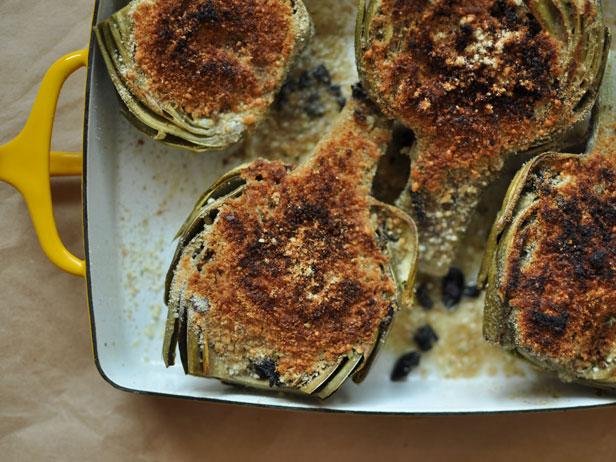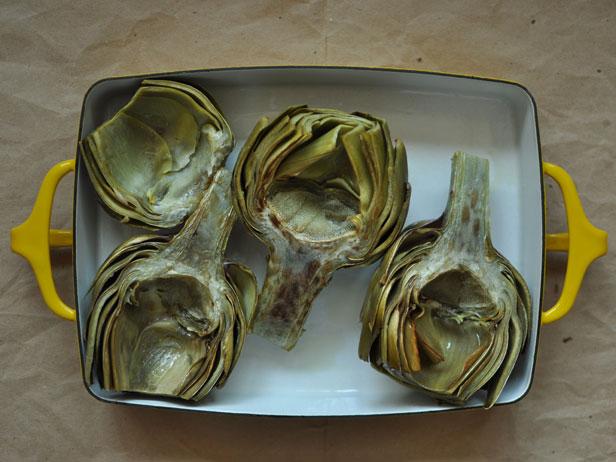Nonna's Artichokes — The Weekender

My sister and I were quite young when our parents decided we were old enough to join them in having artichokes for dinner. An enthusiastic eater from an early age (my first sentence was, “More mayonnaise, please”), I was always happy to try a new food. My sister wasn’t quite so eager, but since there was melted butter involved, she was willing to play along.
The table was set with plates, napkins and the biggest mixing bowl we had, empty in the middle of the table. A steaming artichoke was placed on each plate. They taught us how to pull the leaves off (always taking care to avoid the thorns), dip them in the butter and then scrape the edible flesh off each leaf with our bottom teeth.
Thanks to that early training, I have spent my life as an exuberant artichoke booster. I still like eating them just like we did that first time (though a dish of homemade aioli is also good for dipping), but truly, I can’t think of a time when I’ve turned down any artichoke preparation.
Not too long ago, I came across giant, meaty artichokes on sale for far less than they normally cost and brought some home. Because my husband isn’t nearly as gaga for artichokes as I am, I did a little digging, hoping to find a recipe that might transform him into a fan.

My research brought me straight to Giada De Laurentiis and her recipe for Nonna’s Artichokes. She has you cut them in half, remove the prickly choke and simmer them until just tender. Once the artichokes drain a little, you fry them in garlic and anchovy-infused olive oil and then stuff them with Parmesan cheese, breadcrumbs, chopped olives and capers. They take time, but the finished dish is insanely good and perfect for The Weekender. Even Scott was willing to admit that he’d entertain a meal of artichokes and butter thanks to this recipe.
Before you start cleaning your chokes, here are a few things you should know:
- Artichokes turn brown as soon as you cut in to them (that’s why Giada has you simmer them with lemon — the acid helps prevent browning). Wait to trim them until your water is boiling and you’re ready to start the cooking process.

- When it’s time to fry the artichokes, take care. Because they’ll still have a bit of water in them, it will make the oil sputter and spit. Use a deep skillet and a splatter shield to prevent oil burns.
- Use good-quality breadcrumbs. Because there aren’t that many ingredients in this dish, you really taste each one. I recommend taking the time to toast and grind some fresh bread crumbs instead of using store-bought ones that come in a canister.
Marisa McClellan is a food writer and canning teacher who lives in Center City Philadelphia. Find more of her food (all cooked up in her 80-square-foot kitchen) at her blog, Food in Jars. Her first cookbook,Food in Jars: Canning in Small Batches Year Round, is now available.
































